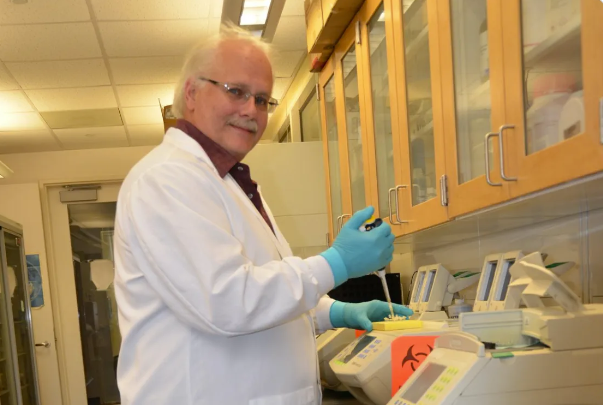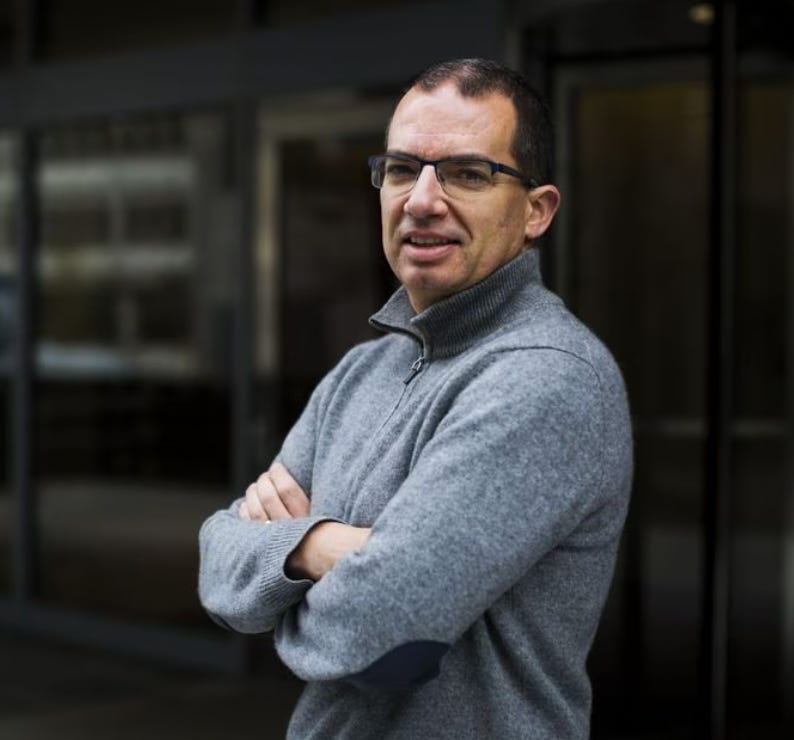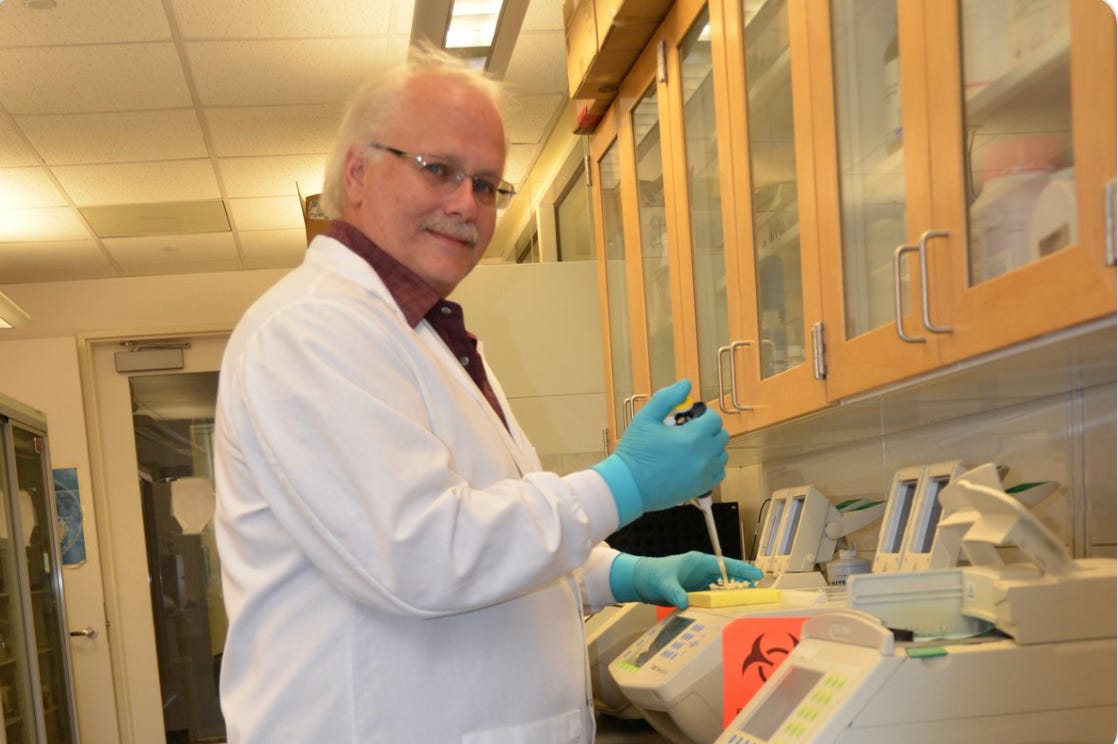The Great SARS-CoV-2 Charade

Originally published on the author’s Substack, Courageous Discourse
The U.S. government continues to ignore the crucial role of American scientists, institutions, and companies in creating the virus that causes COVID-19.
Author’s Note: The following is Chapter I in a four-part series about the true origin of SARS-CoV-2, the causative agent of COVID-19 illness. Because of the enormous amount of research that has gone into this series, including the analysis of thousands of pages of documents, we have decided to make the full content available only to paid subscribers. For only $5.00 per month, readers can access all of our reports and support our ongoing efforts to ascertain and report the truth of what is going on our confusing world. Thank you for subscribing.
Chapter 1: Background and Context
Chapter 2: Events Between 2015 and 2020
Chapter 3: Catastrophe, Coverup, and the Great Charade.
Chapter 4: Ending the Great Charade/ A New Path to Truth & Justice

CHAPTER 1: Background and Context
The 20th Century was marred by a series of disasters inflicted on mankind by the military-industrial complex of various nation states. These disasters were expressions of new technology and mechanized industry being applied to the perennial project of making war. Mankind has always been a tribal species, and competing tribes have always made war on each other. A million times more creativity and ingenuity have been devoted to the art of war than to the art of conflict resolution. Likewise, we are, naturally compelled by fulminations about the depravity of our competing tribes, while efforts to understand the world from their point of view seem feeble and boring. We are all, to some degree, addicted to drama and conflict. And so, as Plato famously remarked, “Only the dead see the end of war.”
As lamentable as this is, the story of the COVID-19 Pandemic marks a new chapter of human folly, arrogance, and hubris. The origin of the catastrophe lies in mankind’s understandable desire to eradicate infectious diseases through inoculation. In the American context, this ambition goes back to the great Puritan theologian and scientist, Cotton Mather, who was a towering figure in the early years of Harvard College and a vehement advocate of smallpox inoculation in the early 18th century. However, the sequence of events that culminated in the COVID-19 catastrophe begins with the Spanish Flu Pandemic of 1918.
I doubt we fully understand the multifactorial causes of the Spanish Flu. As Dr. McCullough and I recount in our book, The Courage to Face COVID-19, scientific understanding of the Spanish Flu was retarded by the opinion of the German bacteriologist, Dr. Richard Pfeiffer. Twenty years earlier he’d claimed that influenza was caused by a bacterium that he isolated from the noses of influenza patients in 1892—a bacterium that he named Bacillus influenzae. Pfeiffer, a close colleague of Robert Koch, made many important discoveries in bacteriology and immunology, so few scientists in 1918 were inclined to question his authority, even when they found no evidence that his bacillus was the causative agent. In 1931, the American virologist Richard Shope conducted experiments on swine that led him conclude that a virus caused the Spanish Flu (though the severe pneumonia was probably caused by a secondary bacterial infection).
Shope’s viral theory of the Spanish Flu generated great interest in studying respiratory viruses. The Russian botanist, Dimitri Ivanovsky, postulated the existence of viruses in 1892, but the science of virology didn’t really take off until the 1930s. Following the influenza pandemics of 1957 and 1968, a network of virologists, infectious disease experts, and vaccine developers emphasized the need for greater preparation for the next pandemic flu. Because the 1957 and 1968 flu pandemics originated in China, scientists in Europe and the United States focused their increasing pandemic planning endeavors on China as the likely origin of the next outbreak.
However, the next novel flu strain didn’t break out in China, but among servicemen stationed at Fort Dix, New Jersey in 1976. To this day, the origin of the 1976 Swine Flu remains a mystery, though it’s notable that it broke out among soldiers living in tight quarters, just as the 1918 Spanish Flu outbreak was first observed among soldiers in military training camps in Europe, and later at military bases in the United States.
Until 2002, planning for the next respiratory viral pandemic was focused on influenza viruses. However, with the outbreak of the first SARS coronavirus in China, the Bio-Pharmaceutical Complex shifted much of its attention to virulent coronaviruses. SARS-CoV-1 was ultimately traced to caged palm civits for sale at food markets in southern China. These animals were thought to be the intermediate host species in which the virus mutated and evolved to become infectious to humans. In 2005, University of Hong Kong researchers found what appeared to be the original reservoir of SARS-CoV-1—the Chinese rufous horseshoe bat, which lives in large colonies in southern China.
It’s important to note that, prior to 2003, coronaviruses (some of which cause the common cold) were not thought to be particularly dangerous to humans. That all changed with SARS, with its high case fatality rate. However, instead of regarding SARS as something of a fluke caused by unhygienic food market practices in China that could be remedied with stricter regulations, the Bio-Pharmaceutical Complex embarked on a massive, high-tech adventure to wage preemptive war on the next SARS pandemic that was, we were told, sure to come. It wasn’t a matter of if, but only of when.
THE FRENCH CONNECTION
BioMérieux is a French in vitro diagnostics company that operates in over 160 countries. The company originated at the Institut Mérieux in Lyon, France, founded by biologist Marcel Mérieux (who was a colleague of Louis Pasteur).
Marcel’s grandson, Alain Mérieux, is the company’s chief proprietor and (according to Bloomberg) worth approximately$8.80 billion. A personal acquaintance of Jacques Chirac (French President from 1995-2007), in 2003 (following the outbreak of the first SARS) Mérieux was instrumental in forming a cooperative agreement between France and China to build a BSL-4 lab annex to the Wuhan Institute of Virology.
The CEO of bioMérieux during the years 2007-2011 was man named Stephane Bancel, who headed the company during the planning phase of the new lab and the training of its Chinese staff at bioMérieux’s facilities in Lyon. In the year 2007, Bancel also oversaw the company’s opening of a new division in Cambridge, Massachusetts. As noted in its annual report:
The opening in 2007 of a dedicated theranostics division in Cambridge (Massachusetts, USA), a city with an especially high concentration of biotechnology firms and research centers, puts bioMérieux in a hub for personalized medicine, in direct contact with the most influential players in the field.

Four years later, in 2011, Bancel left his plum position at bioMérieux to become CEO of the Cambridge startup Moderna. Back then it seemed like a Quixotic decision. After all, the new company had just one employee and was exclusively focused on developing mRNA therapeutics. As Bancel stated in a December 2020 interview, “When I resigned from my last company, bioMerieux, to start on this journey at Moderna, I told my wife there was only a 5% chance it would work out.”
ENTER PETER DASZAK
Dr. Peter Daszak was born in Ukraine, grew up in England, and moved to New York, where he become CEO of EcoHealth Alliance. Originally the company—called the Wildlife Preservation Trust—was dedicated to preserving wildlife habitat and funded largely by donors who love nature. However, in the early 21st Century, the company increasingly dedicated itself to the proposition that wildlife habitat conservation was not only good for wildlife, but would also help to prevent infectious disease outbreaks by limiting contact between humans and wild animal disease reservoirs. The 2003 SARS outbreak seemed to comport well with this theory, and in 2010, the company changed its name to EcoHealth Alliance and directed its fundraising efforts to obtaining grants from U.S. federal agencies (DoD, Homeland Security, and International Development) that were interested in the business of infectious disease outbreaks.

The prevailing theory for the emergence of SARS was that it was a direct result of human encroachment into the forested areas of southern China—the habitat range of the rufous horseshoe bat. After suspicion fell on this species in 2005, scientists at the Wuhan Institute of Virology began collaborating with Peter Daszak to catalogue all of the viruses carried by these bats and to ascertain which was most likely to pose a threat to humans.
In 2013, Daszak and his collaborators at the Wuhan Institute of Virology published a paper (in Nature) titled Isolation and characterization of a bat SARS-like coronavirus that uses the ACE2 receptor. They were very excited about it, because for the first time in history, they’d found two wild bat coronaviruses that would bind with the human ACE2 receptor. These two viruses were named:
- Bat SL-CoV-WIV1
- SHCOI4
Because these two virus species could (Daszak claimed) bind to human ACE2 receptors, they were (Daszak further claimed) of great interest to virologists who are in the business of anticipating which viruses could, in theory, mutate and evolve in order to infect and become transmissible among humans. Though one could rationally argue that the mere fact of SARS in 2003 lent credence to the concern that Bat SL-CoV-WIV1 and SHCO15 could evolve to infect humans, this was a highly theoretical proposition that was based on little empirical observation. Nevertheless, it is impossible to understate the importance of Daszak’s 2013 paper with his WIV colleagues Xing-Ye Ge and Zheng-Li Shi.
ENTER RALPH BARIC
The world’s greatest authority on coronaviruses is by far the University of North Carolina Professor of Epidemiology and Microbiology, Ralph Baric. In the field of virology, he is a towering eminence, and even critics of his dangerous gain-of-function work on viruses cannot help admiring his extraordinary knowledge and industriousness.

Shortly after Chinese scientists published the genome of a novel respiratory virus that was apparently causing cases of severe pneumonia in Wuhan, China, Dr. Baric and a few colleagues published a paper in which they described the virus and its taxonomy, and named it SARS-CoV-2.
It’s a notable fact that Wuhan, China lies 1000 kilometers north of Guangdong Province—the habitat of the horseshoe bats that are thought be the natural reservoir of the SARS-CoV viruses that are thought to be the ancestors of SARS-CoV-1 and SARS-CoV-2. Equally notable is that fact that—contrary to reports in the mainstream media in early 2020—there were none of these bats for sale at the Wuhan food market that became the focus of the outbreak investigation.
Wuhan is just one of 155 cities in China that number over 1 million inhabitants, spread out over a national territory about the size of the United States (excluding Alaska). Of all cities in China, it’s a remarkable fact that SARS-CoV-2 was first detected in Wuhan—location of the Wuhan Institute of Virology.
Dr. Baric knew about SARS coronaviruses in Wuhan because, since 2013, he had worked with scientists at the Wuhan Institute of Virology (WIV) to perform gain-of-function work on Bat SL-CoV-WIV1 and SHCO15. Together with Xing-Ye Ge and Zheng-Li Shi, who had (with Peter Daszak) discovered these viruses in horseshoe bats, Professor Baric published two papers in the years 2015 and 2016.
1). A SARS-like cluster of circulating bat coronaviruses shows potential for human emergence (published in Nature Medicine)
2). SARS-like WIV1-CoV poised for human emergence (published in Proceedings of the National Academy of Sciences, or PNAS).
In the first paper, Baric and his colleagues describe how they created a “chimeric virus expressing the spike of bat coronavirus SHC014 in a mouse-adapted SARS-CoV backbone” and named it SHC014-MA15.
In the second paper, Baric and his colleagues describe how they “also produced WIV1-CoV chimeric virus that replaced the SARS spike with the WIV1 spike within the mouse-adapted backbone” and named it WIV1-MA15.
Regarding their first chimera (SHCOI4-MA15) Baric et al. made the bold claim that it:
can efficiently use multiple orthologs of the SARS receptor human angiotensin converting enzyme II (ACE2), replicate efficiently in primary human airway cells and achieve in vitro titers equivalent to epidemic strains of SARS-CoV.
In the next Chapter, I will examine the content of these two papers, and the events that unfolded between their publication and the emergence of SARS-CoV-2 during the latter half of 2019.
One of our country’s most important freedoms is that of free speech.
Agree with this essay? Disagree? Join the debate by writing to DailyClout HERE.



